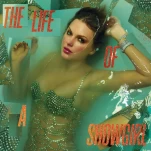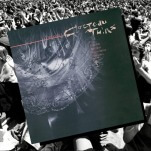Iconic Craft Breweries Are Completely Surrendering to IPA Dominance
Photos via Sierra Nevada Brewing, Lagunitas Brewing
In our current era, I’m beginning to think that craft beer geeks must fall into one of three camps. They would be:
1. The rank and file drinkers who genuinely cannot get enough India pale ale, and have no problem with other beer styles being displaced in the market by more and more IPA. I don’t personally know many of these people, but if they didn’t exist, we wouldn’t be seeing what we’re seeing right now.
2. IPA doomers, those frustrated souls who have come to resent the country’s most popular and prolific craft beer style. These folks, of which I have occasionally been one, can often be found at the pulpit, preaching about the impending doom of beer variety as it threatens to be crushed under an inexorable tide of hops.
3. IPA agnostics, who acknowledge that the style has grown to rather ridiculous proportions, but also find themselves just as annoyed with the latest iteration of “the sky is falling” from beer fans who they believe spend entirely too much time complaining about IPA.
As annoyed as I often am by the omnipresent nature of IPA at hyped craft breweries, and the fact that so many beer drinkers are also willing to make excuses for objectively bad beer, it’s hard to fault the point that those IPA “agnostics” are often trying to make. As they would often put it: Yes, there’s a ton of IPA out there, but it’s not that hard to find alternatives either. “Let people enjoy what they enjoy!”, you might expect to hear. And really, there’s no way you can argue against that sentiment. If you love IPA—and I still do love hoppy beer as well, in my own way—then it should go without saying that you’re free to proclaim that love and enjoy an era of universal access to hazy, juicy hoppiness. If IPA is all you care for in the beer world, then perhaps there’s never been a better time for craft beer than right now.
For those of us burdened with a little bit broader historical perspective, though, the continuing encroachment of IPA isn’t just problematic from a standpoint of “all I can find at the bar is IPA!” Rather, that encroachment represents an existential, transformative threat to the heart and soul of some of the iconic companies that have for decades represented craft beer as a whole. And when a company with that kind of stature is radically transformed by kowtowing to the dominance of IPA, then it’s impossible to act as if the industry itself isn’t being equally transformed. Because if not even the icons of the industry are immune to the pressure to transform their entire beer lineup into shades of similar IPA, who can be expected to resist?
Sadly, there’s no clearer illustration of this in the craft beer world right now than what has been going on with the beloved Sierra Nevada Brewing Co. in the last few years. Although Sierra Nevada, like most American breweries, has always been associated with hops (in the form of their iconic Pale Ale and others), the most recent phase of its evolution has come to structure itself entirely around hops and IPA. In the process, a company once known for its balanced lineup of classic beer styles and trendsetting experimentation has become almost completely homogenized. To those who have loved the beers of Sierra Nevada for decades, it feels tragic to see a single beer style displace so many other, excellent selections.
But let’s get into the details. Just how much has IPA gained dominance over a brand like Sierra Nevada? Well, the brewery has four “core” brands—which consist of Pale Ale and three IPAs. Then there’s the “Little Thing” series, consisting of two flagship hazy IPAs, a kettle sour, and a “citrus wheat” beer flavored in such a way as to mimic the same juicy flavor profile of hazy IPA. Then there’s the “seasonal” beer lineup … which now consists of four IPAs and nothing else. Only the “high-altitude” section of strong ales avoids being mostly IPA, although it does contain Hoptimum Triple IPA.
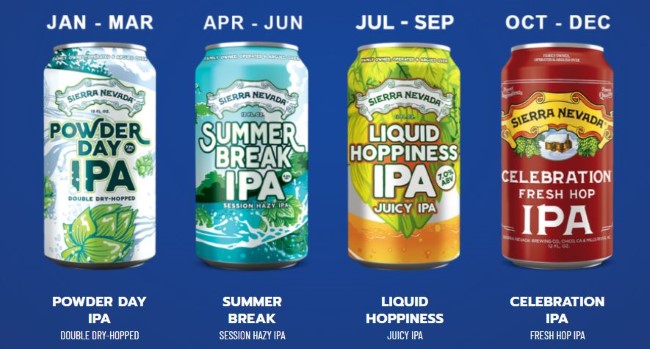 Perpetual IPA seasonals.
Perpetual IPA seasonals.
Now think back to recent years, and the kinds of beers you may have sampled from Sierra Nevada in that time. Perhaps you loved the Nooner pilsner, or the seasonal Summerfest lager. Maybe you were a devotee of the annual Oktoberfest lager, even after the COVID-19 pandemic prevented it from being a yearly collaboration with a German brewery. Maybe your jam was the Otra Vez gose, or Ruthless Rye, or fall seasonal brown ale Tumbler, or Sierraveza Mexican lager. Maybe your first exposure to classic Belgian ales was Sierra’s Ovila series of abbey ales?
Not a single one of those brands is referenced anywhere on the Sierra Nevada website today. Zero of them, in any capacity, are implied to still exist. Perhaps the company is still making them occasionally, or producing them to fill out the taplists of its brewery taprooms, but their marketing department isn’t acknowledging any of them—not even beers like Summerfest and Oktoberfest, which were seasonal staples for years. Now, every single season is apparently the “season of IPA.” The Oktoberfest page of the Sierra Nevada website even points visitors to the autumn IPA.
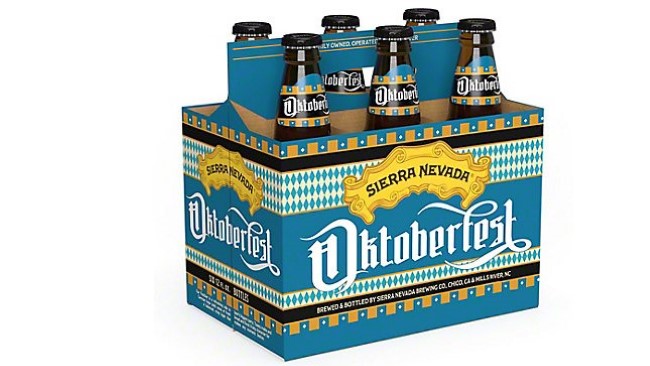 Seemingly the latest casualty.
Seemingly the latest casualty.
But that’s not even the end of it—there are also the Sierra Nevada “zombie brands,” which the company still acknowledges, but effectively doesn’t distribute. On the website, classics such as Kellerweis, Porter and Stout—the first beer that Sierra ever produced—are listed under the “speciality” section, with text saying they’re “worth the search.” The company is tacitly admitting what any fan of those beers has known for a long time—they’re almost impossible to find in distribution, because all the national shelf space is reserved for other brands, almost all of them IPAs. Sure, if you’re visiting a Sierra Nevada brewery in California or North Carolina, you might be able to find a pint of Kellerweis or Stout at the company taproom. But for 99.9% of the brewery’s customers, these brands effectively do not exist. Even using the company’s “get this beer” tool on the website, I couldn’t find availability of any of these brands in the last three major cities where I lived: Chicago, Atlanta and Richmond. And what tiny percentage of consumers would even take the time to attempt to use such a tool in the first place?
It’s not as if this phenomenon is constrained to only a few companies, though—I’m not using Sierra Nevada as a sample out of some desire to specifically focus on them. Rather, this is just the state of the landscape for many of the most recognizable American breweries in 2022. New Belgium has largely been swallowed up by the still-exploding success of the Voodoo Ranger line of beers. Shiner is refocusing on IPA in 2022. Cigar City’s focus on Jai Alai and other IPAs has only become more pronounced. Stone dubbed itself a lager brewery back in 2021, and then proceeded to introduce more IPA brands before eventually selling to Sapporo this year.
For more of the same, look at the likes of Lagunitas, whether or not they still qualify under the increasingly irrelevant Brewers Association definition of a “craft brewer.” Like Sierra Nevada, they seem to have quietly retired certain key beers from their lineup, or at least it certainly looks that way when you’re looking at the official beer lineup, a rather sad page that begins with three “spiked teas” rather than any beers. One thing you won’t see? Lagunitas classic PILS Czech-Style Pilsner, which is nowhere to be found, and seemingly no longer has a page of its own on the Lagunitas website. It doesn’t even make an appearance on the Gone But Not Forgotten page, which mentions other discontinued Lagunitas classics such as Censored, Dogtown Pale Ale, and Cappucino Stout. It’s probably safe to say that all were sacrificed on the altar of IPA, given that the company is now selling a variety pack that contains nothing but IPA. Is that not the most oxymoronic concept of “variety” imaginable?
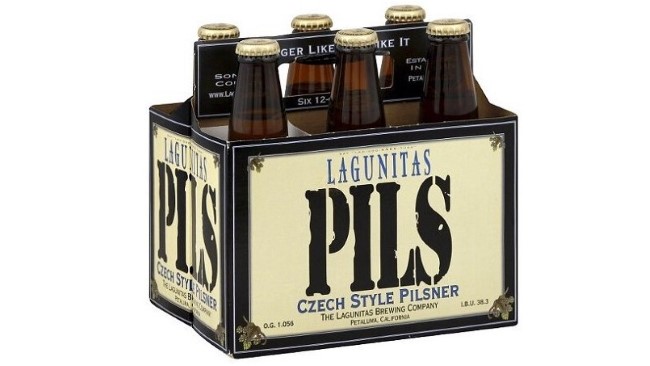 Potentially MIA?
Potentially MIA?
It’s hard to watch this kind of domination by a single beer style without feeling some sense of tragedy, especially when talking about brands that have so long been cited as bellwethers of the American craft beer industry. A few years ago, the likes of Sierra Nevada or Lagunitas would have been the kind of brewery you’d universally hear as a response if you asked for an example of an American craft brewery that generally represented the diversity and breadth of the segment. Today, these companies still represent “typical” American craft brewers, but in a sense that is more problematic—they fit with the zeitgeist exactly because their formerly diverse beer lineups have been consumed by IPA the way The Blob might envelop a small town. And with every “seasonal” overhaul, we seem to be losing more and more of the distinct, eclectic styles that originally made the craft beer scene such an exciting exploration for so many of us. The homogenization continues unabated.
For seasoned drinkers, there will surely always be access to the greater diversity of styles we’re looking for, but that doesn’t mean we can’t simultaneously mourn for the days when the industry’s most respected brands possessed that kind of diversity. And finally, consider the newer craft beer drinker, the person who may have only become interested in the beer scene within the last few years. If things continue this way, how long will it be before those new drinkers are familiar with nothing but IPA and the occasional kettle sour? When every seasonal is an IPA, do seasons even exist?
Jim Vorel is a Paste staff writer and resident beer and liquor geek. You can follow him on Twitter for more drink writing.
